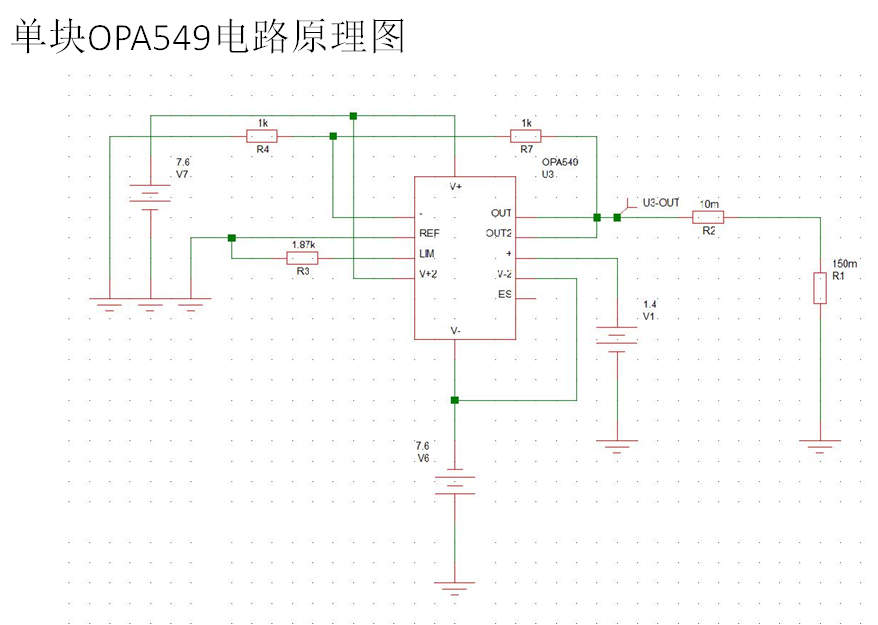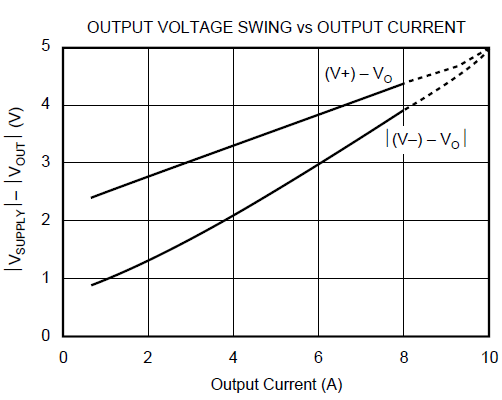Hi team,
Nice to reach out to you. My customer is doing a pre-research project and will use our OPA549, to generate a programmable low voltage and high current power source.
They have below questions which need your help:
Testing schematic:
1. Accuracy of the current-limiting resistance
Below are the measurement results:
|
RCL(Current-limiting resistance) |
VCL Theory |
VCL Test |
Isupply |
Iout Theory |
Iout Test |
Vset |
|
1870Ω |
0.948V |
7.25A |
8A |
7.11A |
ref+0.95V |
|
|
940Ω |
0.529V |
0.520V |
7.91A |
8.89A |
7.75A |
|
|
867Ω |
0.492V |
0.490V |
8.31A |
8.97A |
8.16A |
|
|
845Ω |
0.481V |
9A |
ref+0.48V |
If RCL=1870 Ω, the Iout should equal to 8A in theory, but the measurement result equals to 7.11A. Why there is the difference? What’s the error range for the RCL?
2. How the output load influences the (V+)-Vo value?
Are there any requirement for the output load? Customer tested the voltage difference (V+)-Vo under the Iout=8A, with the output load 150m Ω , and (V+)-Vo=5.5V, which higher than the datasheet value, max output voltage swing is 4.3V. Will it cause any risk to the device?
They also tested below data:
When the output load increases to 300mΩ, the (V+)-Vo = 4.5V
When the output load decreases to 10mΩ, the (V+)-Vo = 7V
3. They want to use OPA549 in parallel. How many pieces can be connected in parallel? Considering customer will have 8A output current for 1 piece. Are there any matters which they need to pay attention to?
4. Do we have any roadmap for High-Voltage, High-Current Operational Amplifier?
Looking forward to your reply. Thanks!



